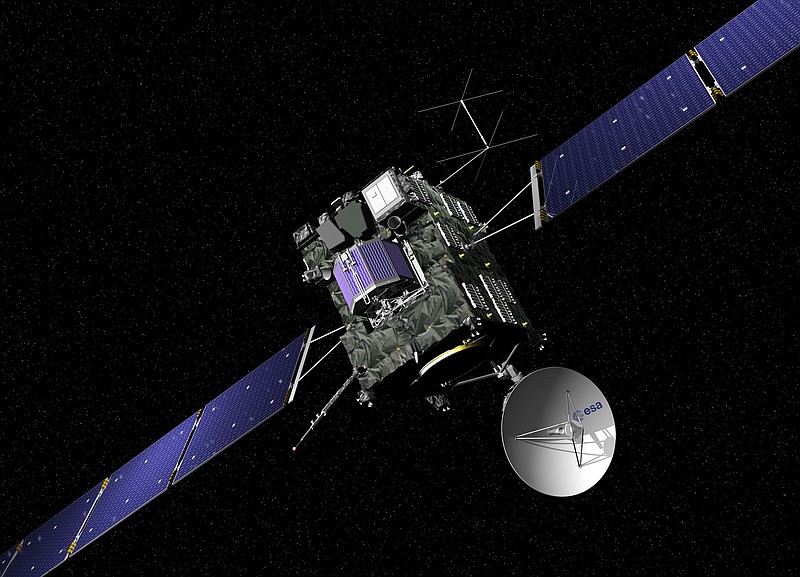BERLIN-After 12 years of hurtling through space in pursuit of a comet, the Rosetta probe ended its mission Friday with a slow-motion crash onto the icy surface of the alien world it was sent out to study.
Mission controllers lost contact with the probe, as expected, after it hit the surface of comet 67P/Churyumov-Gerasimenko at 1039 GMT (6:39 a.m. EDT) Friday, the European Space Agency said.
"Farewell Rosetta, you've done the job," said mission manager Patrick Martin. "That is space science at its best."
ESA chief Jan Woerner called the 1.4 billion-euro ($1.57 billion) mission a success. Aside from sending a lander onto the surface of comet 67P in November 2014-a cosmic first-the Rosetta mission has collected vast amounts of data that researchers will spend many years analyzing.
Scientists have already heralded several discoveries from the mission that offer new insights into the formation of the solar system and the origins of life on Earth.
Spectacular images taken by the orbiter and its comet lander revealed a desert-like landscape on the comet with wide, featureless regions but also high cliffs and sinkholes that were more than a hundred meters (110 yards) across.
The shape of 67P itself-two orbs connected by a "neck" that have been likened to a giant rubber duck-surprised scientists when Rosetta first got up close. Researchers now believe the orbs formed independently and later merged into one.
Jessica Sunshine, a senior scientist on NASA's Deep Impact and Stardust comet missions, said the way the comet was formed has implications for the model of how other objects in the solar system, including Earth, formed about 4.5 billion years ago.
Scientists were also surprised to find that the surface of 67P is changing, not just due to steady erosion as particles are released into the void, but also from sudden large events such as landslides.
"We see evidence of mass movement of materials on this comet," said Sunshine, who wasn't directly involved in the Rosetta mission. "That's nothing like what we imagined."

